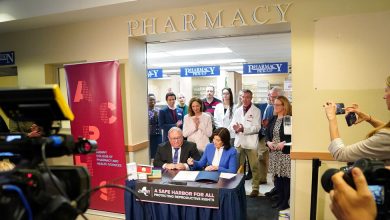The D.E.A. Needs to Stay Out of Medicine

Even when her pancreatic cancer began to invade her spine in the summer of 2021, my mother-in-law maintained an image of grace, never letting her own pain stop her from prioritizing the needs of others. Her appointment for a nerve block was a month away, but her pain medications enabled her to continue serving her community through her church. Until they didn’t.
Her medical condition quickly deteriorated, and her pain rapidly progressed. No one questioned that she needed opioid medications to live with dignity. But hydrocodone, and then oxycodone, became short at her usual pharmacy, and then at two other pharmacies. My mother-in-law’s 30-day prescriptions were filled with only enough medication to last a few days, and her care team required in-person visits for new scripts. Despite being riddled with painful tumors, she endured a tortuous cycle of uncertainty and travel, stressing her already immunocompromised body to secure her medications.
My mother-in-law’s anguish before she passed away in July 2022 mirrors the broader struggle of countless individuals grappling with pain. I’m still haunted by the fact that my husband and I, both anesthesiologists and pain physicians who have made it our life’s work to alleviate the suffering of those in pain, could not help her. It is no wonder that our patients are frustrated. They do not understand why we, doctors whom they trust, send them on wild goose chases. They do not understand how pharmacies fail to provide the medications they need to function. They do not understand why the system makes them feel like “drug seekers.”
Health care professionals and pharmacies in this country are chained by the Drug Enforcement Administration. Our patients’ stress is not the result of an orchestrated set of practice guidelines or a comprehensive clinical policy, but rather one government agency’s crude, broad-stroke technique to mitigate a public health crisis through manufacturing limits — the gradual and repeated rationing of how much opioids can be produced by legitimate entities. This is a bad and ineffective strategy to solving the opioid crisis, and it’s incumbent on us to hand the reins of authority over to public health institutions better suited to the task.
Since 2015, the D.E.A. has decreased manufacturing quotas for oxycodone by over 60 percent and for hydrocodone by about 72 percent. Despite thousands of public comments from concerned stakeholders, the agency has finalized even more reductions throughout 2024 for these drugs and other commonly prescribed prescription opioids.
In theory, fewer opioids sold means fewer inappropriate scripts filled, which should curb the diversion of prescription opioids for illicit purposes and decrease overdose deaths — right?





